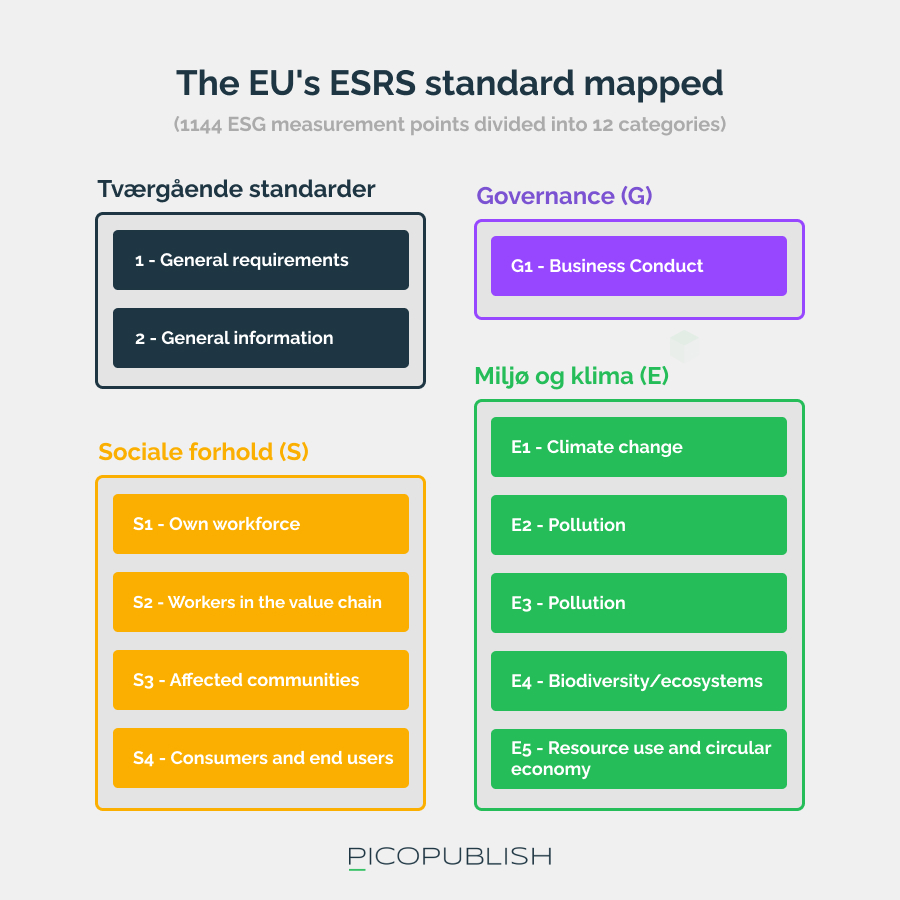Double importance - get control of the process around your sustainability reporting
In connection with the sustainability reporting that must take place in continuation of the CSRD directive's implementation in Danish and European law, companies need to find out what they are reporting on. And this is where the new "double materiality analysis" comes into the picture.
The CSRD reporting must be based on the ESRS standard, which sets out 1144 possible measurement points across approx. 14 categories - all of which are relevant to selected ESG areas.
In order to avoid that all companies collect and report on all points in the ESRS standard, a double materiality analysis must be used to methodically select and argue for which ESG areas the company reports on.

What is a dual materiality analysis?
"Double materiality" is a term that describes which environmental, social or governance-related factors are of great/greatest importance to a company.
A double materiality analysis is carried out prior to the company's sustainability report in order to identify which parameters in the ESRS standard the company believes are relevant to include in their report.
That something has "double significance" means that the company both actively influences the relationship and that they in turn are affected back by the relationship (e.g. climate change, social/demographic traits, gender equality, etc.).
The double materiality analysis must take into account all links in the value chain:
- The company's own activities
- Upstream activities
- Downstream activities

Why do a double materiality analysis?
The double materiality analysis is a requirement of the CSRD Directive, and thus a matter of compliance.
The ESRS standard, which forms the basis for the sustainability reporting that companies must do in connection with the CSRD report, contains 1144 measurement points. For many companies, collecting data around all 1144 points will be an insurmountable task.
Therefore, companies must use a double materiality analysis as a "sorting tool" in connection with their reporting. The analysis will most likely rest on contributions from both external actors and internal actors, all of whom serve as data sources for the measurement points that companies consider to be "important".

When is a relationship "substantial"?
When a company conducts a double materiality analysis, they must ask themselves the following questions:
- Does the company's activities affect the investigated relationship?
- Are we influenced by external forces in relation to the relationship?
A specific condition could be "water consumption". In this connection, section E3-4 of the ESRS standard requires the company to report on its own water consumption and on the risks and opportunities the company sees in relation to this matter.
One risk could be that the company is located in a place where access to clean water is difficult. An option, on the other hand, could be for the company to make visible how they can reduce their water consumption and/or switch to using another resource instead.



